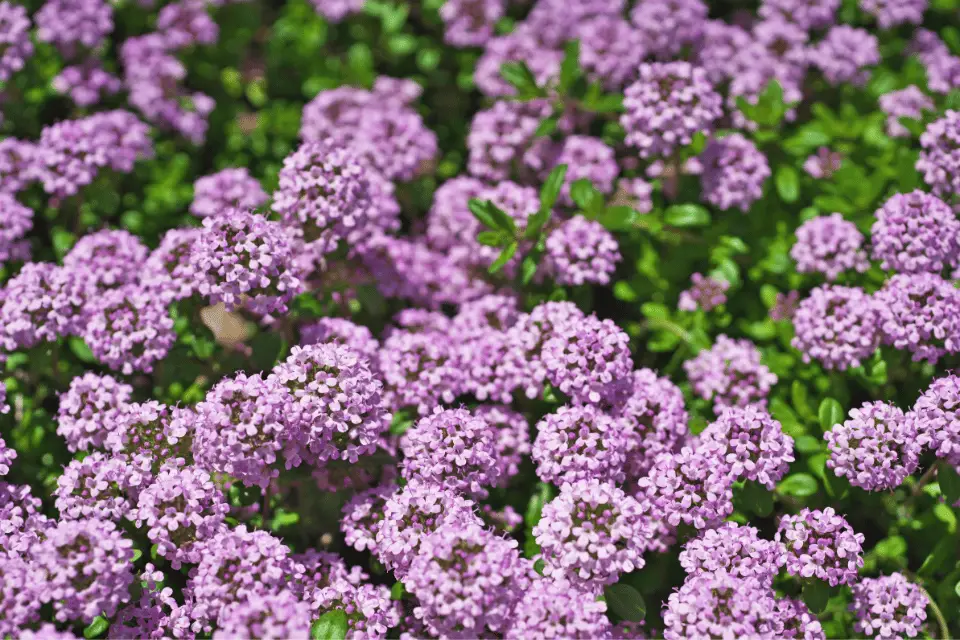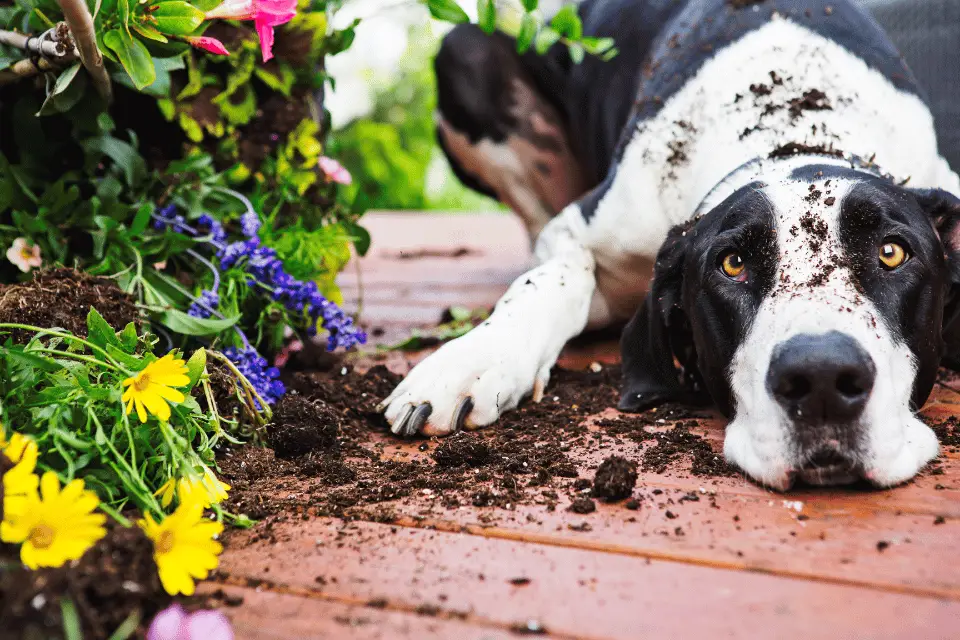A Pet Parent's Guide: Is Red Creeping Thyme Safe for Dogs?
As a pet parent, ensuring the safety of your furry friend is of utmost importance. When it comes to gardening, you may wonder if certain plants are safe for your dogs. One such plant is creeping thyme. In this comprehensive guide, we will explore whether creeping thyme is safe for dogs or if it poses any risks to their health.

Creeping thyme is a popular ground cover plant known for its vibrant flowers and aromatic foliage. It adds beauty to gardens and is often used in landscaping projects. However, before incorporating it into your outdoor space, it's essential to consider its potential effects on your canine companion.
While thyme is generally safe for humans and often used in cooking, its safety for dogs is a topic of concern. Some pet owners believe that creeping thyme can have toxic effects on dogs if ingested, while others claim that it is harmless. It's important to navigate through the conflicting information and make an informed decision about whether or not to have creeping thyme in your dog-friendly garden.
Join us as we dive into the world of creeping thyme and its potential impact on your canine companion. Stay tuned to discover the truth about this popular plant and whether it can coexist safely with your beloved dog.
Understanding the potential risks of creeping thyme for dogs
Creeping thyme, also known as Thymus serpyllum, is a popular ground cover plant known for its vibrant flowers and aromatic foliage. It adds beauty to gardens and is often used in landscaping projects. However, before incorporating it into your outdoor space, it's essential to consider its potential effects on your canine companion.
While thyme is generally safe for humans and often used in cooking, its safety for dogs is a topic of concern. Some pet owners believe that creeping thyme can have toxic effects on dogs if ingested, while others claim that it is harmless. It's important to navigate through the conflicting information and make an informed decision about whether or not to have creeping thyme in your dog-friendly garden.br/>
Research suggests that while creeping thyme is generally not considered highly toxic to dogs, it can still cause gastrointestinal upset if ingested in large quantities. Thyme contains certain compounds, such as thymol and carvacrol, which can irritate the digestive system and potentially lead to symptoms such as vomiting, diarrhea, and abdominal pain. Additionally, some dogs may be more sensitive to thyme than others, and individual reactions can vary.
Common signs of creeping thyme poisoning in dogs
If your dog has ingested creeping thyme, it's important to be aware of the common signs of poisoning. While mild cases may only result in mild gastrointestinal upset, severe cases can lead to more serious complications. Some common signs of creeping thyme poisoning in dogs include:br/>
1. Vomiting: If your dog has ingested creeping thyme, they may experience episodes of vomiting. This is the body's way of trying to rid itself of the potentially harmful substance.
2. Diarrhea: Thyme ingestion can also lead to diarrhea in dogs. Loose, watery stools may occur, and your dog may need to go outside more frequently than usual.
3. Abdominal pain: Dogs with creeping thyme poisoning may exhibit signs of discomfort or pain in the abdominal area. They may become restless, whine, or exhibit changes in behavior.
4. Loss of appetite: Thyme ingestion can cause dogs to lose their appetite. If your dog is refusing to eat or showing disinterest in food, it may be a sign of poisoning.
5. Lethargy: Dogs may become lethargic or weak if they have ingested a toxic amount of thyme. They may appear sluggish and lack energy.
It's important to monitor your dog closely and seek veterinary attention if you notice any of these signs or if you suspect your dog has ingested a large amount of creeping thyme.
Steps to take if your dog ingests creeping thyme
If you discover that your dog has ingested creeping thyme, it's crucial to take prompt action to minimize any potential harm. Here are some steps you can take:br/>
1. Contact your veterinarian: It's essential to reach out to your veterinarian immediately if you suspect your dog has ingested creeping thyme. They can provide guidance based on the specific circumstances and advise you on the best course of action.
2. Provide information: When contacting your veterinarian, be prepared to provide details about the quantity of thyme ingested, the time of ingestion, and any symptoms or changes in behavior you have observed.
3. Follow their instructions: Your veterinarian may recommend inducing vomiting or administering activated charcoal to help absorb any remaining toxins in your dog's system. It's important to follow their instructions carefully.
4. Monitor your dog: After taking the necessary steps, closely monitor your dog for any changes in behavior or symptoms. If there are any concerns or if the symptoms worsen, contact your veterinarian immediately for further guidance.
Remember, prevention is always better than cure. It's crucial to keep potentially harmful plants out of your dog's reach to avoid any accidental ingestion.
Safe alternatives to creeping thyme for landscaping
If you're concerned about the potential risks of creeping thyme and still want to maintain a beautiful garden, there are several safe alternatives to consider. These plants can provide similar aesthetic appeal without posing a threat to your furry friend. Here are some safe alternatives to creeping thyme for landscaping:br/>
1. Catmint (Nepeta): Catmint is a perennial plant that produces beautiful lavender-blue flowers. It is safe for dogs and can attract butterflies to your garden.
2. Marigolds (Tagetes): Marigolds are vibrant flowers that come in various colors. They are safe for dogs and can add a pop of color to your garden.
3. Sunflowers (Helianthus): Sunflowers are not only visually appealing but also safe for dogs. They can brighten up any garden with their large, cheerful blooms.
4. Basil (Ocimum basilicum): Basil is an herb that is safe for dogs and can be grown in containers or garden beds. It adds a delightful aroma and can be used in cooking as well.
By choosing these safe alternatives, you can create a beautiful and dog-friendly garden that you and your furry friend can enjoy together.
Creating a dog-friendly garden with non-toxic plants
When designing a dog-friendly garden, it's important to consider the overall safety of the plants you choose. Opting for non-toxic plants can help minimize the risk of accidental ingestion and potential harm to your dog. Here are some tips for creating a dog-friendly garden with non-toxic plants:
1. Research plant toxicity: Before adding any new plants to your garden, research their toxicity levels. Several resources, such as the ASPCA's website, provide extensive lists of toxic and non-toxic plants for pets.
2. Fence off sensitive areas: If you have certain plants that may be toxic or harmful to dogs, consider fencing off those areas to prevent access. This can help ensure the safety of your dog while still allowing you to have a diverse garden.
3. Create designated play areas: Designate specific areas in your garden where your dog can play freely without the risk of encountering potentially harmful plants. These areas can be filled with non-toxic grass, dog-friendly toys, and other safe elements.
4. Incorporate raised beds: Raised garden beds can be an effective way to keep your dog away from plants that may be unsafe. They provide a physical barrier and can also add an aesthetic element to your garden design.
By following these guidelines, you can create a dog-friendly garden that prioritizes your dog's safety while still allowing you to indulge in your passion for gardening.
Tips for keeping your dog away from potentially harmful plants
While choosing non-toxic plants is crucial, it's equally important to implement strategies to keep your dog away from any potentially harmful plants in your garden. Here are some tips to help you achieve this:
1. Training and supervision: Train your dog to understand basic commands, such as "leave it" or "stay away." Supervise them when they are in the garden and redirect their attention if they show an interest in plants that may be harmful.
2. Physical barriers: Use fences or barriers to keep your dog away from areas where potentially toxic plants are located. This can be particularly useful if you have plants that are difficult to train your dog to stay away from.
3. Citrus deterrents: Dogs often dislike the smell of citrus. Consider placing citrus peels or spraying citrus-scented repellents around plants that you want to protect.
4. Bitter sprays: Bitter sprays are available in pet stores and are designed to deter dogs from chewing on objects. Apply these sprays on plants that you want to keep your dog away from.
5. Regular exercise and mental stimulation: Ensure your dog gets enough exercise and mental stimulation to prevent them from becoming bored and resorting to destructive behaviors, such as chewing on plants.
By implementing these tips, you can help create a safe environment for your dog while still enjoying a beautiful garden.
Consulting with a veterinarian about plant safety for dogs
If you're unsure about the safety of specific plants for your dog or if you have any concerns, it's always a good idea to consult with a veterinarian. They can provide personalized advice based on your dog's breed, age, and health condition. A veterinarian can also recommend specific plants that are safe for dogs and guide you in creating a pet-friendly garden.
Resources for further information on pet-friendly landscaping
To further expand your knowledge and ensure the safety of your furry friend, here are some resources you can explore:br/>
1. The American Society for the Prevention of Cruelty to Animals (ASPCA): The ASPCA website provides a comprehensive list of toxic and non-toxic plants for pets. They also offer guidance on pet-friendly gardening.
2. Pet Poison Helpline: The Pet Poison Helpline is a 24/7 animal poison control center that can provide immediate assistance in case of plant-related emergencies. They have a comprehensive database of toxic plants and can advise on the necessary steps to take.
3. Local gardening centers: Reach out to local gardening centers or nurseries in your area. They can provide guidance on pet-friendly plants that thrive in your specific region.
By utilizing these resources, you can stay informed and make educated decisions when it comes to creating a safe and pet-friendly environment for your dog.
Conclusion: Prioritizing your dog's safety in your garden design
In conclusion, while creeping thyme may not be highly toxic to dogs, it can still cause gastrointestinal upset if ingested in large quantities. It's important to be aware of the potential risks and take precautions to keep your dog safe. By opting for safe alternatives and creating a dog-friendly garden with non-toxic plants, you can enjoy a beautiful outdoor space without compromising your furry friend's well-being. Remember to consult with a veterinarian if you have any concerns or questions about plant safety for dogs. By prioritizing your dog's safety in your garden design, you can create a harmonious environment where both you and your beloved pet can thrive.
Disclaimer
The information contained on this website is for informational purposes only and is not intended to be a substitute for professional medical advice. Always consult with your veterinarian before making any changes to your pet's diet, medication, or exercise routine.
We cannot guarantee the accuracy of the information on this website, and we are not liable for any damages or losses that may result from the use of this information.
By using this website, you agree to the terms of this disclaimer.
- The information on this website is not intended to diagnose or treat any medical condition.
- If you have any concerns about your pet's health, please consult with your veterinarian.
- We are not responsible for any inaccurate or outdated information on this website.
- We reserve the right to make changes to this disclaimer at any time.





Comments